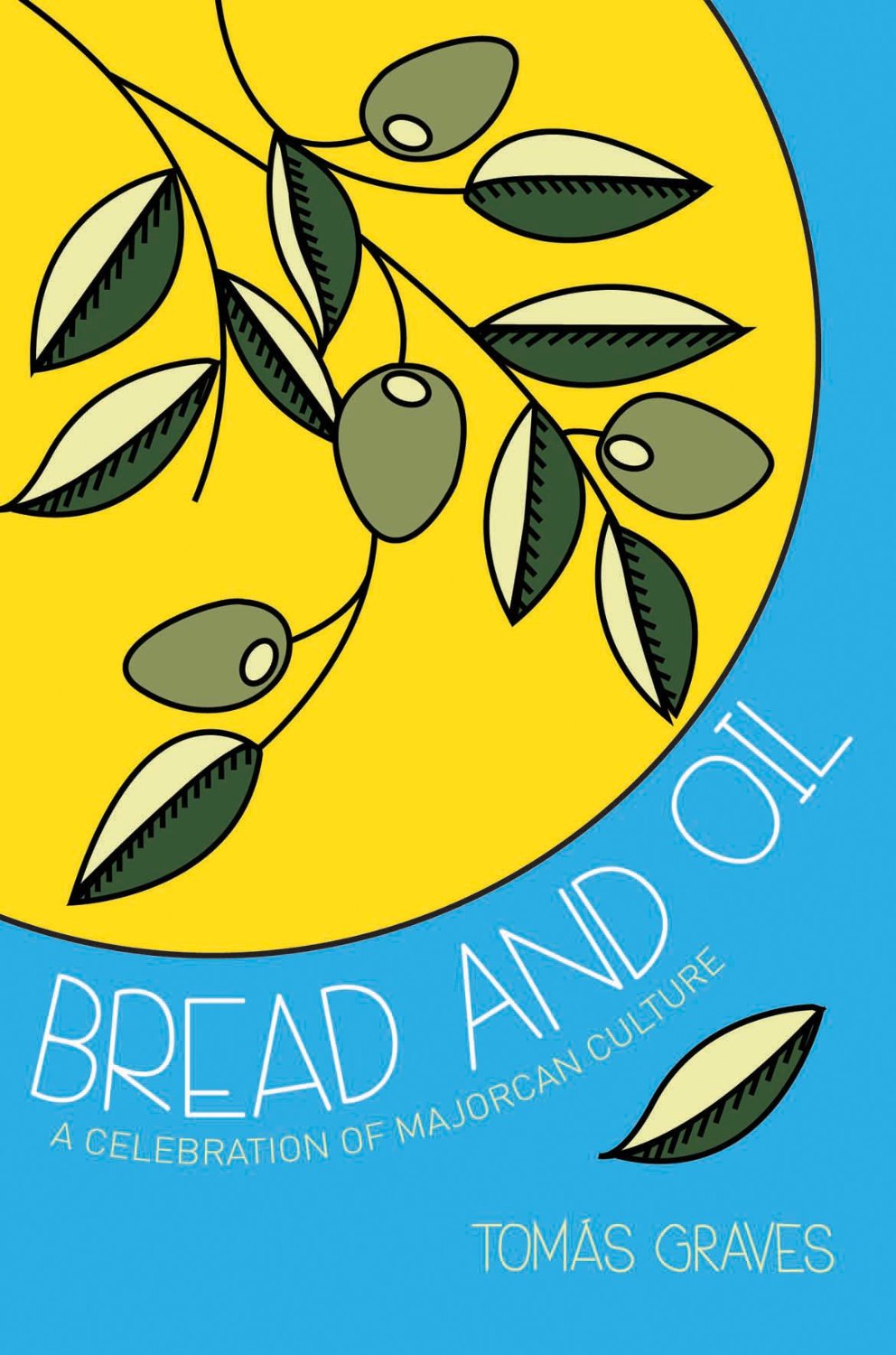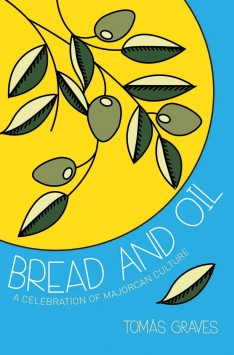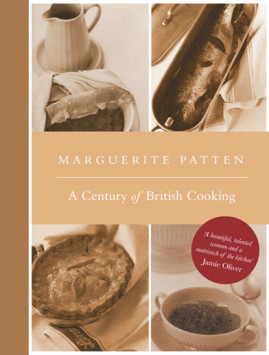Bread And OilA Celebration of Majorcan Culture
Coarse bread rubbed with tomato or garlic and then bathed in olive oil, is common to all the Mediterranean cultures. On the island of Majorca, it is known as pa amb oli, bread and oil.
Coarse bread rubbed with tomato or garlic and then bathed in olive oil, is common to all the Mediterranean cultures. On the island of Majorca, it is known as pa amb oli, bread and oil. Tomás Graves takes this healthy peasant staple as a starting point to explore not only Mediterranean cooking, agriculture, and traditions but also the historical events that have rescued this simple dish from disappearing along with a way of life that had remained essentially unchanged since Roman times.
In Bread & Oil Tomás Graves celebrates the Majorcan character as reflected in its eating habits. He makes the sights, sounds, scents and people of the Spanish island spring to life so brilliantly in this creative triumph. Part adventure, part history book, part travelogue, part restaurant guide and part cookbook, the reader is charmed throughout. Recipes reflect the indigenous ingredients; wrinkled olives made with olive oil, lemon juice and crushed garlic; fried sardines topped with sautéed onions and marinated in vinegar served cold with bread and oil, and guacamole with tomatoes and onions.
Originally published as Volem pa amb oli in the native Catalan language of the Balearics, this new revised and updated English-language edition of Graves’ book offers an informative guide not only to an overlooked culinary tradition, but also to the immense cultural transition that’s changing the face of Europe.
Tomás Graves, son of celebrated British poet Robert Graves, was born and raised in Majorca, where he still lives. He is a master craftsman of typographic design and letterpress printing and he also plays in a rock band. He is the author of two other books A Home in Majorca: A Practical Guide to the Traditional House and Rural Life and Tuning Up at Dawn, which was seralised on BBC Radio Four as Book of the Week.
‘…an unusual and valuable book, fascinating and unputdownable.’
-Elisabeth Luard
‘A beautifully written book…More than just recipes, this book describes the island’s history, traditions, diet and agriculture but with a fresh approach…’
-Yes Chef!
‘…sights, sounds and tastes of life jump off the page…’
-Living Abroad
‘…chatty, playful and unpretentiously learned.’
-The Guardian
Hummus, Sweet and Sour Beetroot
Hummus
Pulses are an important part of the Mediterranean diet, yet it seems nobody has time for them anymore. I know of two ways to eat them with bread & oil; committing sacrilege (baked beans on oiled toast) or making hummus as the eastern Mediterraneans do.
500g of cooked chick peas (ciurons) passed through a mouli
200 ml virgin or extra virgin olive oil
The juice of a fresh lemon, or to taste
2 tablespoons of tahini (sesame paste)
1–2 cloves (to taste) of garlic, crushed
Salt
Sweet ground paprika (prebebò) and black olives to decorate
Begin by making a purée of the cooked chick-peas. You can put them through the blender, but using a mouli sieve you will eliminate the skins which are responsible for chick-peas’ flatulent reputation. Tahini is rare in Spain, except for the expensive organic variety sold at health shops. You can make it by crushing sesame seeds in the mortar or whizzing in an electric blender and adding a few drops of water until it emulsifies like mayonnaise.
Mix the chick-pea purée and tahini with the oil in a bowl, adding the lemon juice and salt, to taste. You can then add water to make the hummus a bit lighter. When you have reached the desired consistency, transfer to a serving dish, sprinkle some sweet paprika over the surface and decorate with black olives. Finish with a flourish of olive oil from the setrill, which prevents it from drying out if kept in the fridge (two or three days).
Sweet and Sour Beetroot
A bunch of beetroots at a market stall looks very tempting, but it’s mainly the foreigners who buy them because we don’t know the culinary possibilities of this rich source of iron.
Use rubber gloves for peeling and slicing them, to avoid ending up with scarlet fingers. They are very healthy eaten raw, simply peeled and grated, but in small quantities; the next morning you may find your urine red! I know of someone who checked in for a whole series of clinical tests before he remembered that he had eaten beetroot the night before.
The following is a way of eating them in small doses.
1 bunch of beetroots (about 300 g when peeled) sliced
3 tablespoons vinegar
2 tablespoons sugar (white or brown)
1 teaspoon salt
1 teaspoon cumin seeds
Peel the beetroots, cut them in half and then into thin slices. Put them in a small stainless steel saucepan with the other ingredients and then add enough water to cover. Bring slowly to the boil, stirring occasionally, then simmer, covered, for about fifteen minutes, adding more water if the liquid evaporates. They can be bottled in a sterilized airtight jar for keeping, or served as soon as they’ve cooled down; in a bowl they will keep several days in the fridge.
Preface to the English edition
The language of bread & oil
Much as I dislike its connotations, Majorca is the correct English name for the Mediterranean island on which I was born and have made my home. It is also closer to the original Latin Maiorca than the Spanish and Catalan name, Mallorca. In one generation, the island has undergone one of the most radical cultural and geographical changes of any region in Europe. From a sleepy agricultural society in the Francoist nineteen-fifties, still subject to a provincial aristocracy and with a very small middle class, it jumped into the service industry in the sixties, and over the next two decades the face of the island changed beyond recognition. A rural Majorcan of my age lived the kind of childhood that your great-grand parent might remember.
I wrote this book in Catalan, to which Majorcan bears the same relation as Glaswegian or Jamaican does to English: yes, it’s the same language and no, it isn’t. When a Majorcan villager asks for directions in Barcelona, he receives the same blank stares as a Rangers supporter or a Brixton Rastafarian might when approaching a resident of Belgravia. Occidental Catalan is spoken on the eastern seaboard of Spain from Alicanteas as far as Lleida, while Oriental Catalan is spoken from Tarragona to Perpignan and as far east as the Balearics and the Algher area of Sardinia. Dialects then include Valencian, Catalan of the Principality, Rosellonese, Algherese, Majorcan, Minorcan and Ibizan, etc. The Barcelona dialect is considered linguistically the poorest, yet is the most widely divulged.
The Catalan language, along with Basque and Galician, was seen by Franco’s regime as a threat to national unity, and their use was forbidden in public until the 1960s. Although as a literary and spoken language it is as old as Spanish, Catalan wasn’t allowed to be taught in public schools until the 1980s, except for a brief period before the Civil War, during the Second Republic. Today it is again the basis of social relations and shares with Spanish the status of co-official language in all those Catalan regions with autonomous governments (Valencia, Catalonia and the Balearics), yet only those under thirty and a minority of the over-seventies can read and write it correctly. This reduces the potential readership of a Catalan book in Majorca to a few thousand; half the population is made up of mainland immigrants and foreign residents. Many middle-class Majorcans of my age grew up with their backs to their own language and culture. Now they are having to take Catalan classes—known as ‘recycling’—if they want to enter politics or get a job in education, the civil service or even a savings bank.
So why didn’t I write directly in plain Spanish, which all the islanders understand? Simply because the subject matter itself, a candid social portrait of our island disguised as a food book, insisted that it be written in the local language. Since one is obliged to write in ‘official’ Catalan which is rather bland compared to the ‘salty’ Majorcan dialect, I chose to get around the problem by quoting a lot of my informants verbatim, in italics, to preserve the flavour of the spoken language. In the present edition, italics are reserved for foreign words, so all my quotes will be in quotes.
The Catalan and Majorcan literary scene has been slow in growing from the bottom up; it has concentrated rather self-consciously on bringing an eight-century-old tradition up to date, instead of actually saying much of interest. The only area where it has caught the popular imagination is in rock and rap lyrics, graffiti and fanzines, offshoots of the protest songs of the seventies. New voices are emerging, spurred on by literary prizes, but Volem Pa amb Oli is more in line with the rock lyricists than with any serious writers. Many Majorcans have told me that it was the first book they had been able to read in their own language without reaching for the dictionary; that’s thanks to my limited Catalan literary vocabulary, which permits no showing off. The title, literally ‘We Want Bread and Oil’, comes from a popular ditty akin to ‘Give us some figgy pudding’ but with nationalist connotations. It was in fact sung by Majorcan political prisoners while on hunger strike against conditions in Franco’s jails and, more recently, by anarchist groups and conscientious objectors on street marches.
The Balearic market for our own culture is so limited compared with the six million Catalan consumers on the mainland, that most of it has to be subsidized, creating a very boring cultural panorama. New guides to the local cuisine, architecture, history, geography, art and literature appear weekly, sponsored by savings banks, newspapers and institutions, but very little emerges from the grass roots except for fringe theatre, radical groups’ manifestos or fanzines. Majorcan cookery books abound, but as restaurants try out fancy versions of traditional dishes on new up-market visitors (mainly German) which have replaced the holiday-makers (mainly British), so local publishers go for coffee-table glossies in which the photographs outweigh the recipes, and whose profits come from foreign-language editions. I thought it was time to defend the true essence of Majorcan —and Mediterranean— food, which is basically cheap and cheerful: whatever is in the larder or in the kitchen garden.
English readers, especially buyers of Grub Street books, are probably better informed about Mediterranean food and culture than the Mediterraneans themselves, so I apologize if I cover some familiar ground which the Majorcan reader hasn’t had access to. The channel followed today by both culinary literature and food distribution is from the productive south to the consuming north. Since the demise of sea trade, there is little cultural interchange between Mediterranean cultures; like the air routes, the axis is vertical. It is much easier to find Greek or Turkish food in London or Hamburg than in Madrid or Morocco. Such typical Mediterranean products as hummus, black olive paste or tahini, all available in any British high-street supermarket, are virtually unknown in Spain, as probably common Spanish products —chufa, chorizo or turrón— would be in Greece or Italy.
This is a direct translation of the original Catalan text and I’ve added an afterword to this second British edition as well as updating some of the information in the ‘Oily Pages’.
I assume the reader to be passingly familiar with Majorca, although much of the information is applicable to any Mediterranean island. All but three of the illustrations were commissioned for this book, for which the artists —all Majorcans or permanent residents on the island— were paid in bottles of virgin olive oil.
Tomás Graves
Deià








Leave a Reply